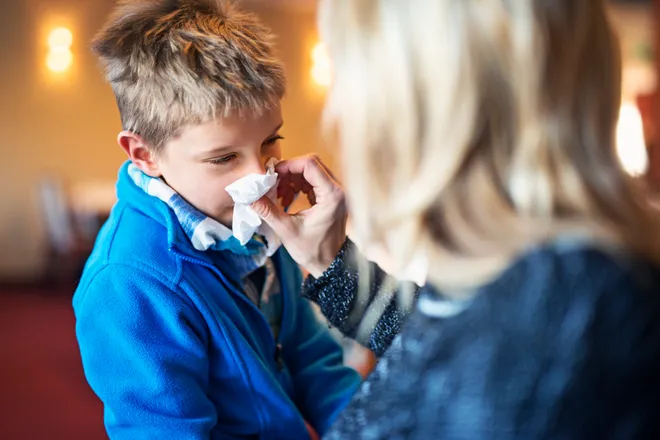Here's the truth about taking antibiotics and how they work
Prior to the discovery of antibiotics, infectious diseases were rampant. Communicable diseases were the most common cause of death, and the average lifespan was about 47 years old. However, this changed with the discovery of penicillin, the first antibiotic. In the U.S., the leading causes of death changed from communicable diseases to non-communicable diseases like cardiovascular disease, cancer and stroke.
Antibiotics are vital for treating bacterial infections. They will not work for viral illnesses like the common cold.
How do antibiotics take out once-deadly diseases? We spoke with Dr. Neha Narula, a family medicine physician with Stanford Healthcare to find out everything you need to know about antibiotics.

How exactly do antibiotics kill bacteria?
It depends on the type of antibiotic. The type of antibiotic is chosen based on the type of infection, the bacteria being targeted and the health of the individual patient.
Sometimes they can directly kill bacteria, but other times they may inhibit the growth of bacteria.
"Some antibiotics, like the group of penicillin antibiotics, work by inhibiting the growth of the cell wall, without which the bacteria are unable to maintain structural integrity and therefore die," Narula says. "Other antibiotics work by interfering with the production of certain proteins within the target bacteria and subsequently curb growth and reproduction."
What happens to your body when you take antibiotics?
Antibiotics are generally well-tolerated, but sometimes you may experience some side effects. Narula says some of the most common side effects include:
- Gastrointestinal symptoms. "This unfortunately can lead to symptoms of diarrhea, nausea, vomiting, abdominal pain and/or cramping," Narula says. In severe cases, they can cause C. diff.
- Yeast infections. Narula says that antibiotics can also disrupt the balance of bacteria in the vaginal tract, which can lead to an overgrowth of yeast. This can lead to symptoms like vaginal discharge, odor, itching and discomfort. She adds that some may have yeast that overgrows in the upper digestive tract (mouth and throat) and this can cause thrush.
- Photosensitivity, or an increased risk of sunburn or rash.
- Allergic reactions.
How do antibiotics know where the infection is?
Sometimes antibiotics can be given topically or through an injection that targets a specific area, but most prescribed antibiotics are systemic, meaning they distribute throughout the body.
Unfortunately, they do not “know” where the infection is.
"The concentration of the antibiotic at the infection site depends on a few factors: the blood flow to the area, and the ability of the antibiotic to penetrate that particular tissue," Narula says. "Once the antibiotics start to interact with the bacteria and target specific processes, it then disrupts the bacteria’s life cycle and leads to the inhibition of their growth or death."
Heads up:What you need to know about RSV, the flu and virus myths
What is antibiotic resistance?
Although antibiotics are vital and were a game-changer for medicine, they may not always be appropriate. You must speak with your physician to determine if your infection is bacterial and not viral or fungal, as antibiotics will not work against these types of infections.
Taking antibiotics when they are not necessary may lead to antibiotic resistance – i.e. an infection where antibiotics can't help – which is bad for your personal health and bad for global health.
"It is so crucial to take antibiotics only when necessary and to complete the full course of treatment when they are prescribed," Narula says. "It’s so important to follow the recommended dose, frequency and duration of treatment. Completing the full course of antibiotics, even if you start to feel better within a few days, helps to ensure that the bacteria has been completely eradicated, and therefore reduces the risk of antibiotic resistance."
Narula urges people to speak with their physician if they have questions or concerns about antibiotics.
'They don't believe me':The pain and dangers of medical gaslighting
Disclaimer: The copyright of this article belongs to the original author. Reposting this article is solely for the purpose of information dissemination and does not constitute any investment advice. If there is any infringement, please contact us immediately. We will make corrections or deletions as necessary. Thank you.






